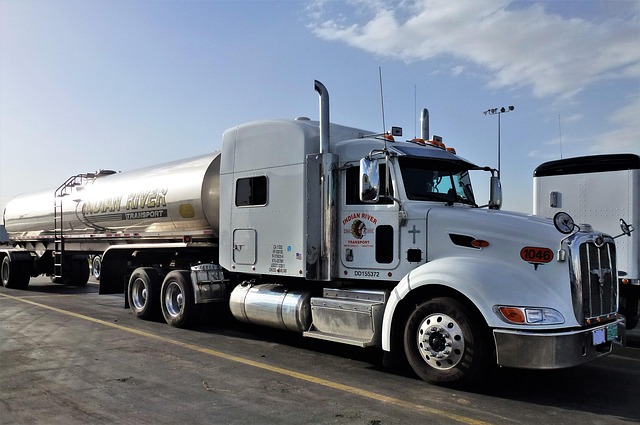Looking to register your car in California? This comprehensive guide walks you through every step, from understanding key requirements to optional online registration. First, familiarize yourself with California’s car registration mandates, including necessary documents for a seamless DMV visit. Learn about the crucial dvm VIN verification process and complete the application with ease. We’ll also cover an optional online registration method for added convenience.
- Understand California Car Registration Requirements
- Gather Necessary Documents for DMV Visit
- Perform Vehicle Identification Number (VIN) Verification
- Complete Application and Pay Fees at DMV
- Register Your Vehicle Online (Optional Step)
Understand California Car Registration Requirements

Before registering your car in California, it’s crucial to understand the state’s specific requirements. The California Department of Motor Vehicles (DMV) mandates several steps for car registration, including a thorough vehicle inspection and verification of the vehicle identification number (VIN). This process ensures that all vehicles on California roads meet safety and emissions standards.
One key component is the DMV VIN verification, which checks the vehicle’s history, ensuring it’s not stolen or has any outstanding issues. You can complete this step through a mobile vin inspection or by visiting a local DMV office. These methods provide convenient ways to verify your car’s VIN, making the registration process smoother and more efficient.
Gather Necessary Documents for DMV Visit

Before visiting a California Department of Motor Vehicles (DMV) office, ensure you gather all necessary documents to streamline the car registration process. This includes your vehicle’s Registration Application (Form DMV-123), which can be obtained online or in person. Additionally, you’ll need proof of identification, such as a driver’s license or state ID card, and proof of residency, like a utility bill or bank statement.
One crucial document is the Vehicle Identification Number (VIN) verification report. This can be arranged through a mobile VIN inspection service, which provides immediate digital documentation, or by visiting a DMV office for a manual inspection. A valid VIN inspection ensures your vehicle’s history is accurately checked, and any potential issues are identified before registration.
Perform Vehicle Identification Number (VIN) Verification

Before registering your car in California, performing a Vehicle Identification Number (VIN) verification is a crucial step. This process involves checking the VIN against the state’s database to ensure the vehicle’s history aligns with what’s claimed. You can do this at a DMV office or opt for a convenient alternative—a mobile VIN verification service. These services send a trained professional to your location, offering a quick and accurate check using specialized equipment.
A mobile VIN inspection provides an efficient way to confirm key details like the vehicle’s age, model, make, and any reported accidents or outstanding issues. This is particularly useful when purchasing a used car, as it offers peace of mind and helps avoid potential scams. By utilizing these modern verification methods, including mobile vin verifier tools, you streamline the registration process and ensure a safer, more transparent transaction.
Complete Application and Pay Fees at DMV

Once you’ve gathered all the required documents, it’s time to head to your nearest California DMV office. You’ll need to complete a Vehicle Registration Application (form DV-140), providing detailed information about your vehicle and its history. This includes details like make, model, year, and color, along with important identifiers such as the Vehicle Identification Number (VIN). The VIN is crucial for verification processes like a mobile vin inspection or a standard vin inspection.
During your visit, you’ll also need to pay the necessary fees associated with registering your vehicle. These costs can vary depending on factors such as the type of vehicle and whether you’re transferring ownership. After submitting your application and paying the required fees, the DMV will process your request and issue a registration certificate for your car, ensuring it’s legally registered and roadworthy in California.
Register Your Vehicle Online (Optional Step)

Registering your vehicle in California can be a straightforward process, especially if you opt for online registration. The California Department of Motor Vehicles (DMV) offers an efficient system that allows you to complete this task from the comfort of your home. One optional step to consider is performing a DMV VIN verification, which can be done online and saves you a trip to a local office.
By utilizing a service for mobile VIN inspection or a vin inspection app, you can ensure a smooth registration process. These tools enable you to verify your vehicle’s identity using its unique Vehicle Identification Number (VIN), providing peace of mind before committing to the registration. This modern approach streamlines traditional procedures and is particularly beneficial for busy individuals who prefer a convenient, digital solution.
In California, registering your car involves understanding key requirements, gathering essential documents, performing a DMV VIN verification, completing applications, and paying fees. By adhering to these steps, you can ensure your vehicle is legally registered and ready for the road. Remember, proper registration not only complies with state laws but also contributes to efficient vehicle management and safety.
